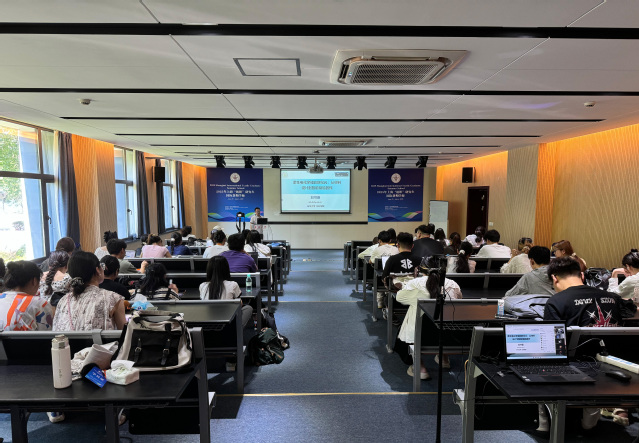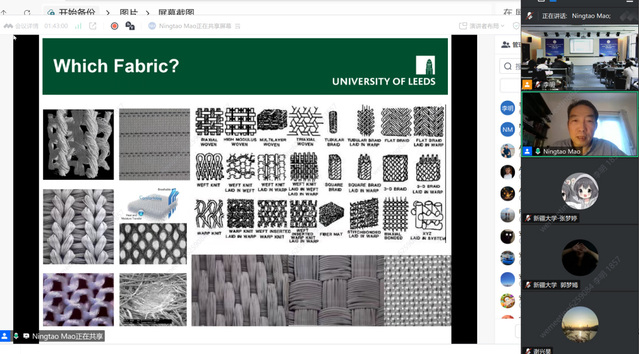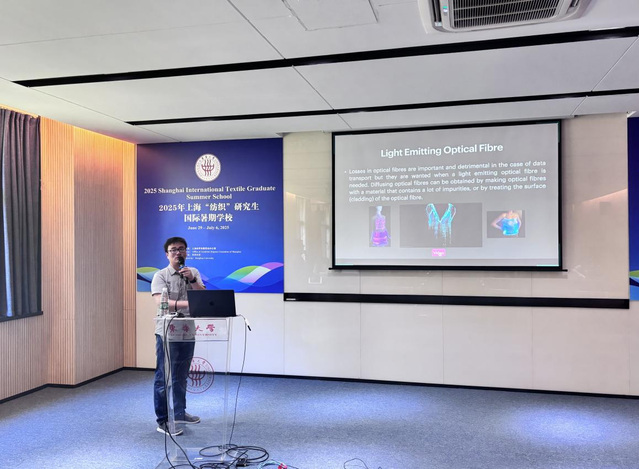2025 Shanghai International Textile Graduate Summer School Teaching Briefing
Issue 4 July 3, 2025 E-mail: fzsqxx@dhu.edu.cn
2025 organizing committee of Shanghai Textile Graduate International Summer,
written by: Han Qi
On July 3rd, Professor Shude Liu from Donghua University, Professor Ningtao Mao from the University of Leeds in the UK, and Professor Xuyuan Tao from Ecole Nationale Supérieure d'Ingénieurs des Textiles (ENST) delivered excellent academic presentations.
Professor Shude Liu introduced the three leading industries in the textile field - flexible electronic fabrics, medical textile materials, and AI textile design. He also elaborated on the classification of flexible energy storage devices, including flexible batteries based on redox reactions and supercapacitors relying on interface double-layer energy storage. He pointed out that the surge in the country's demand for energy storage devices is due to the depletion of fossil energy, the contradiction between energy supply and demand, and the rapid development of flexible electronic devices. Regarding the improvement of the energy density of supercapacitors, he proposed that it could be achieved by optimizing the specific surface area of the electrode, the type of electrolyte, and adopting an asymmetric structure. In addition, he analyzed the advantages and disadvantages of double-layer capacitors and pseudo-capacitors, and introduced the characteristics of electrode materials such as activated carbon and graphene, as well as the preparation processes such as wet spinning.

(Professor Shude Liu)
Professor Ningtao Mao systematically expounded the performance-driven engineering design methodology for industrial textiles, covering key aspects such as design principles, material selection, and structural optimization. Professor Ningtao Mao emphasized that design should be centered on performance requirements. For example, medical fabrics need high absorbency and softness, while industrial fabrics need wear resistance and stain removal capabilities. Material selection must balance physical and chemical properties, environmental friendliness, and cost. Structural design can specifically enhance strength or absorbency. Moreover, differences in fiber morphology directly affect product functionality. He pointed out that the traditional trial-and-error method is costly and time-consuming. It is recommended to combine computer simulation and data analysis to optimize the design process. In the future, industrial textiles will develop towards sustainability, functionality, and intelligence, driving industry innovation and upgrading.

(Professor Ningtao Mao)
Professor Xuyuan Tao focused on introducing several new functional materials such as shape memory polymers, highly absorbent polymers, materials with negative Poisson's ratio, shock absorption materials, and piezoelectric materials. Materials with negative Poisson's ratio expand laterally when stretched, making them suitable for medical textiles. Shock absorption materials like shear thickening gels and D3O materials have outstanding performance in the field of protection. Piezoelectric polymer polyvinylidene fluoride has attracted attention due to its electrical properties. He detailedly explained the five major categories of functional textile materials: conductive textiles, optical fibers, microcapsule technology, photoluminescent textiles, and biomimetic textiles. He also gave examples to describe the principles and application fields of each category of materials. Finally, Professor Xuyuan Tao discussed the multi-disciplinary applications of electronic textiles in Internet of Things smart clothing, covering fields such as Industry 4.0, smart healthcare, and public security. Its system architecture includes modules such as sensing, communication, and energy, demonstrating the broad prospects of smart wearable devices.

(Professor Xuyuan Tao)

